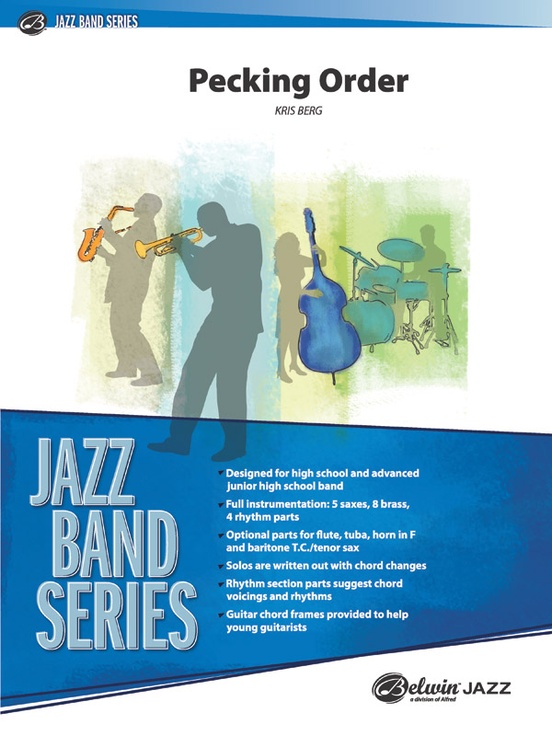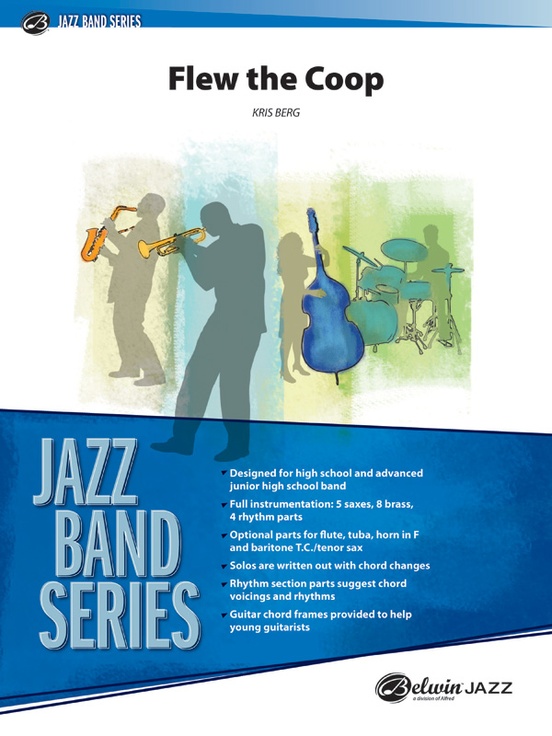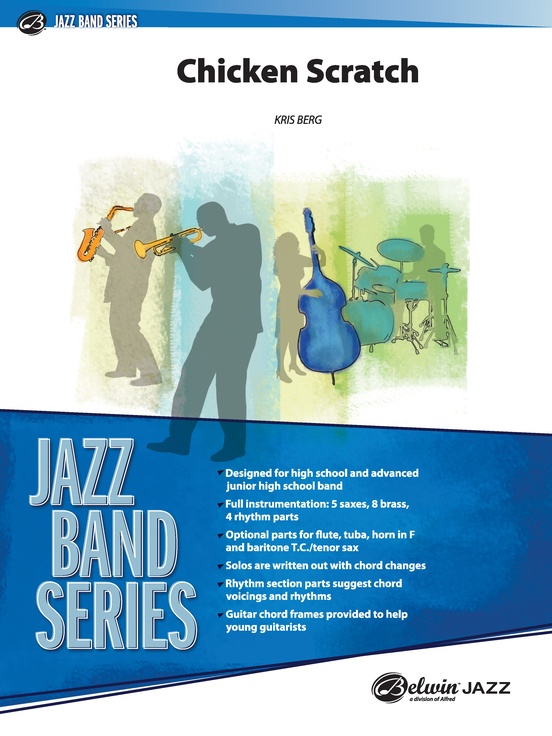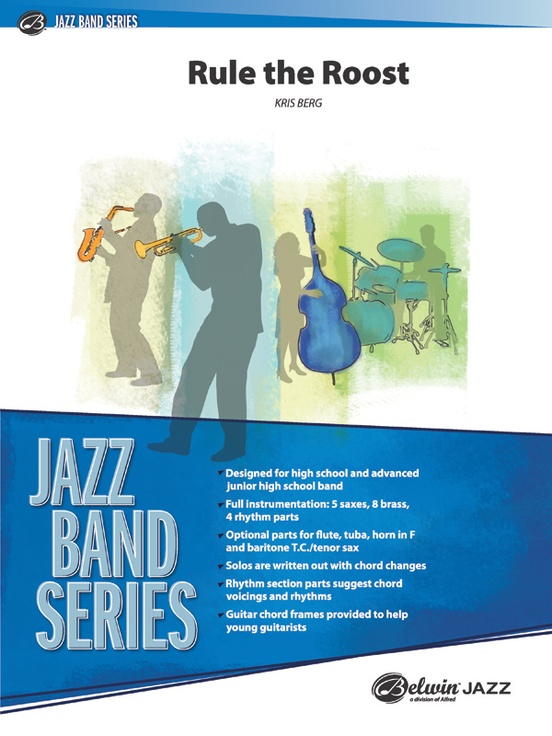BARTÓK TAKES THE TRANE
Jazz Zenith Series
Arranged by Kris Berg
Cat #: EX-ZJE2401
Retail Price: $60.00
Our Price: $57.00
This item usually ships within 5 to 7 business days.
Questions?
Please call +1-518-587-1102 or email us.
Edition: Jazz Big Band Arrangement
Description: Classical/Swing - Medium Difficult
Publisher: Excelcia Music Publishing
Please click here for sound/score video.
Somehow the creative mind of Kris Berg merged a Bartók Piano piece with the well-known Mister PC by John Coltrane. As it turns out, this is a merger where everybody wins! You must check out the amazing saxophone soli that starts at measure 113…it’s brilliant!
From the arranger:
"This is an up-tempo swing chart that will take your jazz band to the next level. A real showstopper, this chart features burnin’ rhythm section, powerful ensemble and a super Sax soli. If you have the horses this is the chart to bring the house down at any festival, competition, or concert.
As the Jazz Program Director for the Greater Dallas Youth Orchestra, a long-running classical program, I am always looking for classical pieces that I can arrange into the jazz genre. In a recent search, I was looking at piano melodies and came across Bartók’s Ten Easy Pieces. Number 3 grabbed my attention, especially it’s almost minor blues chord progression. The melody reminded me a little of Mr. PC, when sped up, which then inspired me to do some inspirational listening to Coltrane. And thus, a chart idea was born. Is it interesting to see a wacky mind at work?!
The beginning of Bartók Takes the Trane is just piano, playing Number 3 as originally conceived. It will be most effective if the performer strives to capture the classical concept here.
There are numerous recordings of this work on YouTube, and I encourage you to make use of listening to them.
At 23, the rhythm sections charges ahead. Not too loud, but certainly with a forte attitude. There are lots of running 1/8th notes in this chart. At this tempo, I encourage players to really strive to even them out and go for flow and accents. This makes the chart swing better. Rhythm section and brass have quick 1/8th note punches in measures 47-49. Notice the accent is on the downbeat. Pop the first note and let the second note sort of “bounce” off the beat. Don’t try to accent the second note. Drums should be very crisp here to help the articulations.
At 54, make sure the echoes in the melody match in volume. 62 relaxes for a moment before building into the BIG hits that send us off to our lead Alto solo. Especially important are the breath markings in measures 73 and 74. Your horns should listen to the lead Trumpet and match.
Both solo sections are open with backgrounds on cue. I like to cue the backgrounds for the last 2 choruses before going on, but feel free to shape this as you like. Soloists don’t have to go crazy as they work on soloing at this tempo, but they should absolutely be sure to play in time. Utilizing the written solo, scale choices and the original melody are all ways to approach these sections. 93 provides some new ensemble, like 54, be sure the volumes of the echoing melodies match throughout the crescendo.
Our Sax soli starts with 4 measures alone. Be sure to not drag! Be aggressive. Match your lead Alto. Balance. Use melodic shape to create dynamics. 5 play as 1!!! All of these concepts will lead to success!! Coming out of the soli, be sure to again notice the breath marks in measures 156-158. These are important as they clean up the hits and provide punch and clarity.
177 is the shout chorus and should be big, but balanced. 203 allows your lead Trumpet to shine for a bit as we head towards our ending. All the band under the lead Trumpet should really exaggerate the crescendos and decrescendos for best effect. After that, we recap the intro into a full band fermata with agressive drums. As you cut this off, let it ring. Don’t be in a hurry to have the Piano come back in (I like drama!). Piano quotes the end of Number 3, but this time at a slightly slower tempo with a ritard. Last band note is very soft with some high register piano effects.
Bartók Takes the Trane is an instant favorite of mine. I feel blessed for the original idea and how it flushed out. I hope you will accept the challenge and make this a feature for your program."
2 Alto Saxophones
2 Tenor Saxophones
Baritone Saxophone
4 Trumpets
4 Trombones
Guitar
Piano
Bass
Drums











